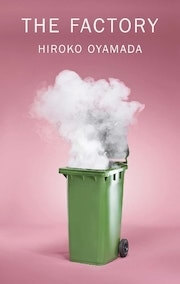5 books to read in October

Every month, a deluge of new books comes flooding out from big publishers, indie houses, and self-publishing platforms. So every month, The A.V. Club narrows down the endless options to five (or six) of the books we’re most excited about.
The Topeka School by Ben Lerner (October 1, Farrar, Straus & Giroux)
From reviewer Kamil Ahsan: “In Ben Lerner’s new novel, The Topeka School, an 8-year-old Adam Gordon, future high school debate champion, is fascinated by how one small poem can ‘destroy the man who made it, prompting a second poem, a spell against the paradoxical effects… of the first.’ Lerner once said he feels ‘the materiality of language most intensely when writing poetry,’ that it occupies ‘this space where every single particle of language is charged with the most meaning.’ As with his previous novels, Leaving The Atocha Station and 10:04… one may be forgiven for thinking Lerner is trying to make up for his implied shortcomings in prose. So much so that reading The Topeka School feels like being thrust into a graduate seminar on grand literary theory. For the most part, it’s as engrossing as can be.”
Read the rest of The A.V. Club’s review of The Topeka School.
Horror Stories by Liz Phair (October 8, Random House)
Liz Phair became an indie darling on the strength of her raw, confessional lyrics, but there’s more still to tell in her memoir, Horror Stories. Beginning with an anecdote about a college classmate who passed out drunk at a party, each chapter is structured around an incident that’s lodged itself into the mortification center of Phair’s brain. These tales of bad influences and worse decisions take place both in and out of show business, and are recounted in a conversational style that flows from musings on the hypocrisy of the music industry to the inspiration behind a particular lyric with an unvarnished immediacy that will be familiar to fans of Phair’s songwriting.
How We Fight For Our Lives by Saeed Jones (October 8, Simon & Schuster)
In his memoir, How We Fight For Our Lives, Pushcart Prize-winning poet and former AM To DM host Saeed Jones recounts his childhood and adolescence in Lewisville, Texas through a kind of slice-of-life portraiture, vibrant ribbons that represent many of his most heartbreaking and edifying moments. Jones’ evocative prose has a layered effect, immersing readers in his state of mind, where gorgeous turns of phrase create some distance from his more painful memories. Although its length is short (just 189 pages), How We Fight For Our Lives fairly pulses with pain and potency; there is enough turmoil and poetry and determination in it to fill whole bookshelves.
Medallion Status: True Stories From Secret Rooms by John Hodgman (October 15, Viking)
John Hodgman’s transformation from fully ironic author of fake trivia books to semi-ironic memoirist continues apace with Medallion Status, the follow-up to his similarly half-somber 2017 tome Vacationland. Here, instead of decaying vacation properties, the focus is on the care, maintenance, and occasional dilapidation of Hodgman’s own Apple- and Daily Show-spawned celebrity, approached with a winning combination of comic self-deprecation and apparently genuine self-loathing. As its subtitle—True Stories From Secret Rooms—suggests, it’s an insider’s look from someone resigned to letting the inside slip inevitably away from him, even as he gives glimpses of such vaunted heights as Delta’s first-class airport courtesy lounge, or the headquarters of one actual, no-fooling secret society.
The Factory by Hiroko Oyamada (trans. by David Boyd, October 29, New Directions)
This one is easily in the running for the oddest book we’ve read all year. Whereas contemporary literary experimentation can often look like merely a quirky coat that a work is wearing—a supposed eccentricity loudly announcing itself to disguise writing that is actually rather conventional—the surreality and utter strangeness of The Factory, which follows three people recently hired at a sprawling factory in Japan, is bone-deep. Disquieting in its slow creep forward, the book presents copious mysteries: What is the purpose of these individuals’ jobs? What does the factory even make? What is up with the human-sized nutria supposedly living and dying in great numbers on the factory grounds? Perhaps even more unexpected is the way writer Hiroko Oyamada refuses to answer the questions she presents, allowing those mysteries, and their unsettling effects, to linger.
More in October: Science Of Rick And Morty by Matt Brady (October 1, Atria Books); Things We Didn’t Talk About When I Was A Girl by Jeannie Vanasco (October 1, Tin House); Face It by Debbie Harry (October 1, Harper Collins); I Used To Be Charming by Eve Babitz (October 8, NYRB Classics); Grand Union by Zadie Smith (October 8, Penguin Press); Movies (And Other Things) by Shea Serrano (October 8, Twelve); Erosion: Essay Of Undoing by Terry Tempest Williams (October 8, Sarah Crichton Books); Dad’s Maybe Book by Tim O’Brien (October 14, Houghton Mifflin Harcourt); Dear Girls by Ali Wong (October 15, Random House); Your House Will Pay by Steph Cha (October 15, Ecco); Agent Running In The Field by John le Carré (October 22, Viking); Find Me by André Aciman (October 29, Farrar, Straus & Giroux); Sweet Days Of Discipline by Fleur Jaeggy (October 29, New Directions); Ordinary Girls by Jaquira Diaz (October 29, Algonquin); Females by Andrea Long Chu (October 29, Verso); The Cheffe: A Cook’s Novel by Marie NDiaye (October 29, Knopf)